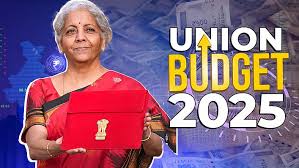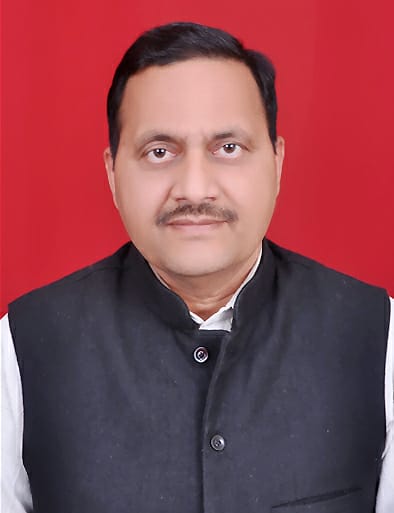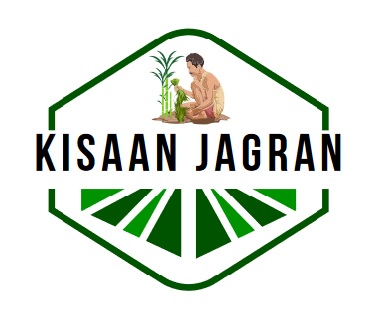
About Union Budget 2025-26 Publish Date : 27/04/2025
About Union Budget 2025-26
Professor R. S. Sengar
Development Dimensions
Budget 2025-26 has rightfully attempted to reinvigorate rural farm and non-farming sector considering their potency in ushering an overall positive economic scenario in the country. With the Union Government's unwavering support, the agriculture and rural sector are poised to become two strong pillars of Aatmanirbhar Bharat (self-reliant India). Budget 25-26 reinforces the country's vision, ensuring that the farm and non-farm sectors in rural India contribute significantly to zero poverty, employment generation, women's empowerment, and economic decentralization.
The Economic Survey 2024-25 was tabled in the Parliament on 31" January 2025. It acknowledged India's steady economic growth while outlining the slowdown in global manufacturing environment, especially in Europe and parts of Asia due to supply chain disruptions and weak external demand. The Survey expected improvement in global competitiveness through adequate supply and demand management mechanisms. The growing rural demand, rebound in agricultural production and productivity, easing out of food inflation and a stable macro-economic environment are vital for a resilient economic growth. At this juncture, the citizens' pre-Budget expectations ranged from improvement in income, wealth, employment and infrastructure to ensure an enabling business environment.
Crore against the Revised Estimate (RE) of Bils Rs 47.16 lakh crore in 2024-25. Out of the total expenditure, Rs. 15,48 lakh crore would be effective capital expenditure during 2025-26 against Rs. 10.18 lakh crore in 2024-25 (RE). The budget announcements noted an increase in allocation for a few priority sectors, The higher allocation aims at accelerating economic growth, enhancing infrastructure, and promoting social welfare.
The overall emphasis is to facilitate the growth environment, to smoothen the pathiways and to hasten the process of achieving the greater goal - "Viksit Bharat' by 2047. The vision Visit Bharat' (Developed India) seeks to posision India as an economic powerhouse, capatite of achieving sustained, inclusive, and equirable development across all sectors of the economy. It is a vision of prosperity, social welfare, and self-reliance, with India energing as a global leader in innovation, technology, environmental sustainability, and good governance.
The Budget 2025-26 reposed its unwavering faith on rural economic growth and allocated Rs. 1.87 lakh crore to the Department of Rural Development, marking an increase of about 5.75% from the previous year's allocation. The enhanced allocation to important rural sectors is aimed at stimulating job creation and consumption demand. This also reflects the government's commitment to fostering comprehensive rural development, aiming to uplift the living standards of rural populations and promote sustainable economic growth in these areas.
A comparison of allocation to select five immertant Ministries with the previous year indicates that priority has been accorded to Skill Development and Entrepreneurships (SDE), Rural Development (RD), Micro, Small and Medium Enterprises (MSME), Agriculture and Farmers' Welfare (AFW), Women and Child Development (WCD), in that order.
While SDE witnessed a quantum jump of 35% hike in its allocation over the BE of 24-25, RD, MSME, AFW, WCD recorded a 5.7%, 4.7%, 3.9% and 3.1rise, respectively, over previous year's allocations. The increased allocation for SD signa’s the government's prioritization at human capital dewelopment and entrepreneurship as critical campers for India's growth trajectory. Similarly, increase o rural investments, improved buyers' cemand, equitable job creation in rural areas are the growth engines of rural economy. This has prompted the Government to allocate more funds to various important rural sectors during 24-25, thereby causing a large positive difference between Budget Estimate (BE) and Revised Estimate (RE) of Budget 24-25.
The Budget 25-26 has allocated a huge Rs. 3.83 lakh crore for subsidies to food and fertilizers and abundantly allocated funds for rural development, agriculture and allied sectors, employment generation and skill and livelihood activities. It Indicates that Agriculture & Allied Activities, Health, Social Welfare, Education, Fertiliser subsidy have witnessed 12.9%, 10.1%, 6.3%, 2.4%, 2.4% hike, respectively, in 2025-26 over 2024-25.
Agriculture & Farmers' Welfare
Agriculture remains a key driver of India's economy. Budget 25-26 has placed significant focus on agriculture and farmers' welfare with a view to enhancing farm productivity, ensuring fair prices for agricultural produce, and providing financial security to farmers. The Prime Minister Dhan-DhaanyaKrishiYojana in partnership with States in 100 districts has been announced where existing schemes and specialised measures related to agriculture development would be converged. The commitment of the Government has been to roll out effective steps to increase productivity, enhance crop intensity by adopting crop diversification and sustainable agriculture practices, augmenting post-harvest storages at the community level, improving irrigation facilities and facilitating flow of necessary agriculture inputs to the farmers. Further, some of other priority interventions include higher investment in irrigation, soil health management, and the promotion of sustainable farming practices such as organic farming and agroforestry.
The Budget advocates improved access to technology, credit, and market linkages for farmers, enabling them to adopt modern agricultural techniques and connect with national and international markets. The allocation also includes strengthening of the PM KisanSammanNidhi (PM Kisan) scheme and expanding farmer-centric infrastructure like cold storage and logistics.
The reduction in urea subsidy and focus on nutrition-based subsidy in the Union Budget 2025-26 reflects the Government's focus on sustainable agricultural practices and bringing in efficiency in fertilizer use. The aim is to reduce over-reliance on urea and to arrest further soil degradation. This move which aligns with the broader objective of promoting organic farming, integrated nutrient management, and the use of alternative fertilizers.is expected to incentivize the agricultural sector to embrace innovative solutions like bio-fertilizers and precision farming.
Further, the PM KrishiSinchaiYojana (PMKSY) which focuses on enhancing irrigation facilities and ensuring water-use efficiency, aims at expanding irrigation coverage, promoting micro-irrigation systems like drip irrigation and sprinklers, and improve water conservation practices. The budget allocation of Rs. 8,260 crore in 2025-26 seeks to enhance water management, reduce dependency on monsoons, and improve agricultural productivity in rain-fed and drought-prone areas.Food Processing Industries.
The PradhanMantri Formalization of Micro Food
Processing Enterprises (PMFME) scheme has witnessed 4.8% hike in its allocation in BE 25-26 against BE 24-25. The Government underscores significant opportunities available for food processing and the micro-enterprise sector and aims to expand required support for formalization, technology upgrades, and market linkages. The vital catalysts in these efforts could be to enhance the capacity of small-scale food processors, enable them to adopt modern processing technologies, improve product quality, and scale up business operations. By promenng formalization, the Scheme intends to help micro food processing units becoming more competitive, increasing the market reach, and Improving the income of smallholder farmers linked to these units.
Rural Employment
The wage and self-employment gereradenprogramnies have always beer perceived to be eftective in a rural set-up which is otherwise riddled with high incidence of poverty, los work participation rates and increased casualization of labour. The existing two wage and self-employment programmes towards building quality and productive community assets and enterprises the Mahatma Gandhi National Rural Employment Guarantee Act (MGNREGA) and DeendayalAntyodayaYojana - National Rural Livelihood Mission (DAY-NRLM) availed continuous importance in Budget 25-26. MGNREGA has retained its allocation at Rs. 86,000 cr. as was in 24-25 BE, the DAY-NRLM got a 26.3% hike in its allocation from Rs. 15,047 cr. in 24-25 to Rs. 19,005 cr. in 25-26.
While the higher outlays to rural employment schemes are praiseworthy, the time has come to improve the efficiencies of planning, execution, monitoring and supervision network across the nation to ensure the quality and durability of assets created under MGNREGA. Enhanced focus on quality asset creation, feasible and location-specific work plan and design, timely and just selection of projects and work sites, extensive survey of works, accurate work design estimates, efficient work execution and adequate technical supervision would support in generating intended community assets, income and employment in rural India.
The DAY-NRLM allocation in the Union Budget 25-26 underscores Government's commitment to improving the livelihoods of rural populations, particularly through women empowerment, entrepreneurship, and skill development. The village entrepreneurship development approach of DAY-NRLM is aimed at creating a catalytic local entrepreneurial ecosystem and encouraging the rural unemployed youth to take up local enterprises on their own. Keeping in view the existing challenges viz. unemployment, low agri-productivity, inadequate farm and non-farm infrastructure, and rural-urban migration, the budget 25-26 makes an attempt in outlining comprehensive solutions involving enhanced investments in infrastructure, financial inclusion, skill-building programmes, and gender equality. These measures will pave the way for a sustainable and prosperous rural future through which India can achieve greater social and economic inclusivity, ultimately contributing to the vision of a Viksit Bharat@2047.
Rural Housing & Connectivity
The 25-26 budget allocation to PM AwasYojana-Grameen (PMAY-G) witnesses a 0.6% increase over BE of 24-25. Rs. 54,832 cr. outlay in the Budget 25-26reflects the government's strong commitment to address rural housing needs and improve living standards of economically and socially disadvantaged. The priority is to ensure access to affordable housing with sanitation and basic amenities and to create job opportunities. The increased budget emphasizes the completion of housing, units for the rural poor, with a focus on providing a roof to every eligible household in rural areas, particularly for the disadvantaged Scheduled Castes (SCs), Scheduled Tribes (STs), and women-headed families.
PradhanMantri Gramin SadakYojana (PMGSY) allocation in the Budget 25-26 presents a significant opportunity for rural development by accelerating the construction and upgrading of rural road infrastructure. With an outlay of Rs. 19,000 cr. in 25-26, the Scheme would improve connectivity in remote and underserved rural areas, fostering economic growth and facilitating better access to markets, healthcare, education, and employment opportunities. Enhanced road infrastructure will not only reduce transportation costs, promote trade, and boost the growth of agriculture and local businesses in rural areas, but also will strengthen the resilience of rural communities to ensure an Aatmanirbhar Bharat while realising the dream of Viksit Bharat@2047.
Dairy and Fishery Development
The Government's strong focus on enhancing the dairy sector's productivity and sustainability is discernible from the enhanced outlay projected for Dairy Development in the Union Budget 25-26. The priority isto improve milk production, ensure better livelihoods for dairy farmers, especially in rural are antopestare processing, storage, and transportation immac Expanded access to modern dairy farming technologies, facilitating training and financial support to dairy farmers, and increasing cold chain infrastructure would require nurturing cooperative models, and increasing market access for dairy products through collective marketing like that of the case of Gujarat Cooperative Milk Marketing Federation under the AMUL dairy brand. This approach, if followed, would ensure self-reliance in dairy production, consolidate small holder dairy farmers, improve their income and wealth, and contribute to the goal of achieving sustainable and inclusive rural development.
The BE 25-26 for PM MatsyaSampadaYojana. (PMMSY) witnessed a hike of 5.7% vis-à-vis BE 24-25. This highlights the Government's resolve to boost the fisheries sector by providing enabling atmosphere and significant opportunities for development of sustainable aquaculture and fisheries. The need of the hour is to improve fishermen's welfare, enhance infrastructure for fisheries, promote modern fishing technologies, and expand cold storage and processing facilities to ensure better market access and to reduce post-harvest losses. In addition, the focus needs to be on ensuring long-term growth and resilience in the sector which presents immense opportunities in uplifting the rural economy, generating employment, and improving food security.
Skill Development
Economy Survey 2024-25 outlines various opportunities and challenges facing an emerging economy like India and suggested India to transform itself into a competitive and innovative economy. This economic transformation would need apt strategies to increase business competitiveness through enhanced investment and sustained business management practices. The Survey calls for urgent attention not only to strengthen infrastructure and improve efficiencies but also to ensure skill development and creating technology enabled labour force. In this context, a comprehensive multi-sectoral 'Rural Prosperity and Resilience' programme was announced with a view to addrus under-employment in agriculture through skilling, invest ant, technology, and in gorating the rural economy. Two portant initiatives which got prominence in the budget arumagraSiksha
The Budget 25-26 has allocated Rs. 41,250 SamagraShiksha. This underscores the country's strong commitment to improving elity education across India, particularly focusing on amare end secondary education. With an increused outlay the priority should be to enhance infrastructure in schools, ensure inclusive education for girls, children with disabilites, and marginalized communities, and Integrate digital learning tools to briage educational gaps, especially in rural and remote areas. The focus should also be on improving teacher training and ensuring skill development to equip students with future-ready capabilities. This allocation aims to support the Government's vision of universal education, skill empowerment, and equal opportunities for all children, contributing significantly to building a skilled workforce for a Viksit Bharat.
The enhanced allocation to PM VishwakarmaYojanaIn Budget 25-26 is expected to empower traditional artisans and craftsmen across India by enhancing their skills, promoting entrepreneurship, and improving their access to modern tools, technology, and financial support. This move would integrate rural artisans into mainstream economic activities by prioritizing development of self-employment opportunities in sectors viz. weaving, carpentry, pottery, and metalworking, among others. The need of the hour is to foster a holistic ecosystem which includes improved and attractive training sessions, easy access to markets and timely availability of credit facilities. This would go a long way in improving the livelihoods of skilled workers, especially from marginalized communities and would ensure that skilled artisans contribute to India's economic growth.
Re-energising MSME
MSMEs are the heart and soul of job creation and industrial enterprises in India. The Budget 25-26announced changes in the definition of MSMEs. Thin presents significant opportunities for rural areas. More enterpri are now eligible to access government support and programmes aimed at enhancing rural entrepreneurship and enterprise With higher investment limuts and expanded eligibility, rural micro and small Enterprises can now et easier access to finance, Technology and market linkages, thereby improving their productivity and competitiveness. This would encourage rural businesses to scale up, create local jobs, and arrest rural migration to urban areas by promoting self-sufficiency. Local businesses like agribusinesses, food processing, and handicrafts would flourish, benefiting directly the farmers, artisans, and women entrepreneurs and contributing to sustainable rural development with adequate community engagements.
Concluding Remarks
Budget 25-26 has rightfully attempted to reinvigorate rural farm and non-farm sector considering their potency in ushering an overall positive economic scenario in the country. It intends to re-orient Government policy intervention in various important areas viz. Agriculture and Farmers Welfare, Food Processing, Employment, Housing and Connectivity, Dairy and Fishery, Skill Development and attempts to re-energise MSMEs by expanding its scope and coverage with a view to bolster make-in-India initiative of the government.
With the Union Government's unwavering support, the agriculture and rural sector are poised to become two strong pillars of Aatmanirbhar Bharat (self-reliant India). Budget 25-26 reinforces the country's vision, ensuring that the farm and non-farm sectors in rural India contribute significantly to zero poverty, employment generation, women's empowerment, and economic decentralization. By positioning Agriculture and MSMEs as engines of inclusive growth, the government is all set to translate the dream of Viksit Bharat @2047 into a reality, ensuring a self-sustaining and resilient economy rooted in people's participation. Increased investments in agriculture, education, MSME, health, digital technology, etc. indicate the balanced sectoral approach which the government has taken in the budget 25-26. This effort will not only accelerate and sustain India's economic growth but would ensure that development reaches each and every citizen, reinforcing and reaffirmingthe long-cherished vision of Viksit Bharat@2047.

Writer: Professor R. S. Sengar, Director Training and Placement, Sardar Vallabhbhai Patel University of Agriculture and Technology, Modipuram, Meerut.


